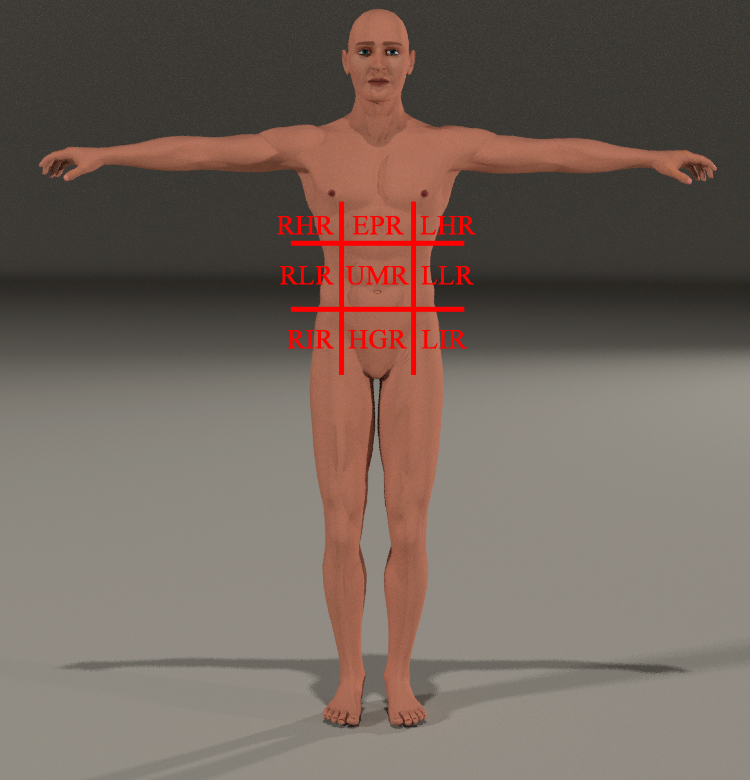The 4 Quadrant Schematic: The intersection of the midsaggittal plane and transverse plane through the navel.
RUQ = Right Upper Quadrant. The right liver, kidney, gallbladder, a bit of the stomach, duodenum, part of pancreas, parts of the ascending and transverse colon, parts of small intestine.
LUQ = Left Upper Quadrant. The left liver, part of stomach, pancreas, left kidney, spleen, parts of transverse and descending colon, part of small intestine.
RLQ = Right Lower Quadrant. Cecum, appendix, part of small intestine, right parts of female reproductive organs, right ureter.
LLQ = Left Lower Quadrant. Small intestine, part of large intestine, left parts of the female reproductive organs, left ureter.
The 9 Quadrant Schematic.
RHR = Right Hypogastric Region. Right portions of liver and kidneys; gallbladder; parts of small intestine.
EPR = Epigastric Region. Stomach; part of liver; part of pancreas; part of duodenum; parts of spleen; adrenal glands.
LHR = Left Hypogastric Region. Spleen; left portions of liver; stomach; pancreas; parts of colon.
RLR = Right Lumbar Region. Gall bladder; parts of kidney and liver; ascending colon.
UMR = Umbilical Region. Parts of duodenum, jejunum, ileum; transverse colon; bottom parts of left and right kidney
LLR = Left Lumbar Region. Descending colon; left kidney; part of spleen.
RIR = Right Inguinal Region. Appendix, cecum, right iliac fossa.
HGR = Hypogastric Region. Descending colon, sigmoid colon, right iliac fossa.
LIR = Left Inguinal Region. Bladder, parts of sigmoid colon, anus, reproductive organs.
Jenkins, G., & Tortora, G. J. (2012). Anatomy and Physiology: From Science to Life, 3rd Edition International Stu. John Wiley & Sons.
Lumen Learning. (n.d.). Mapping the Body | Boundless Anatomy and Physiology. Retrieved from https://courses.lumenlearning.com/boundless-ap/chapter/mapping-the-body/


